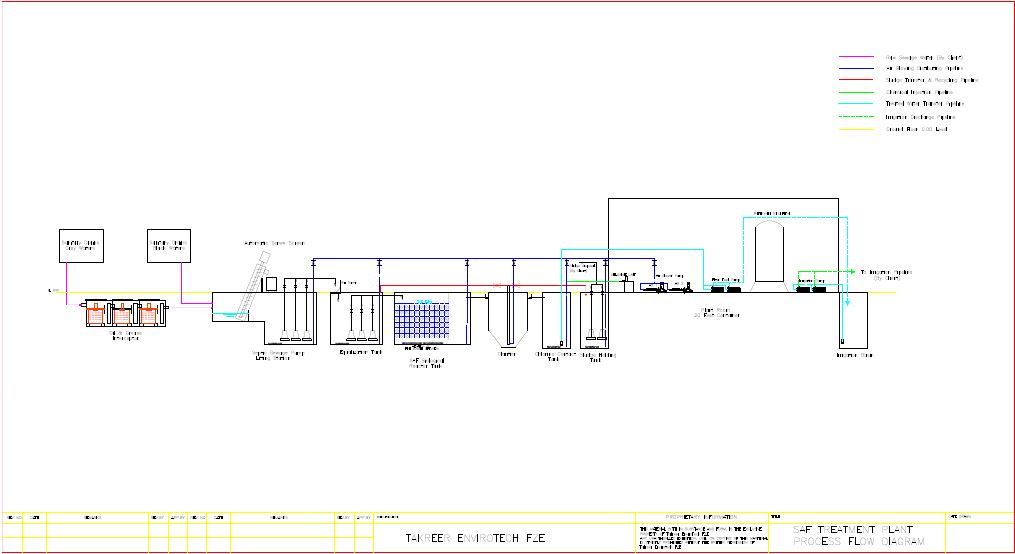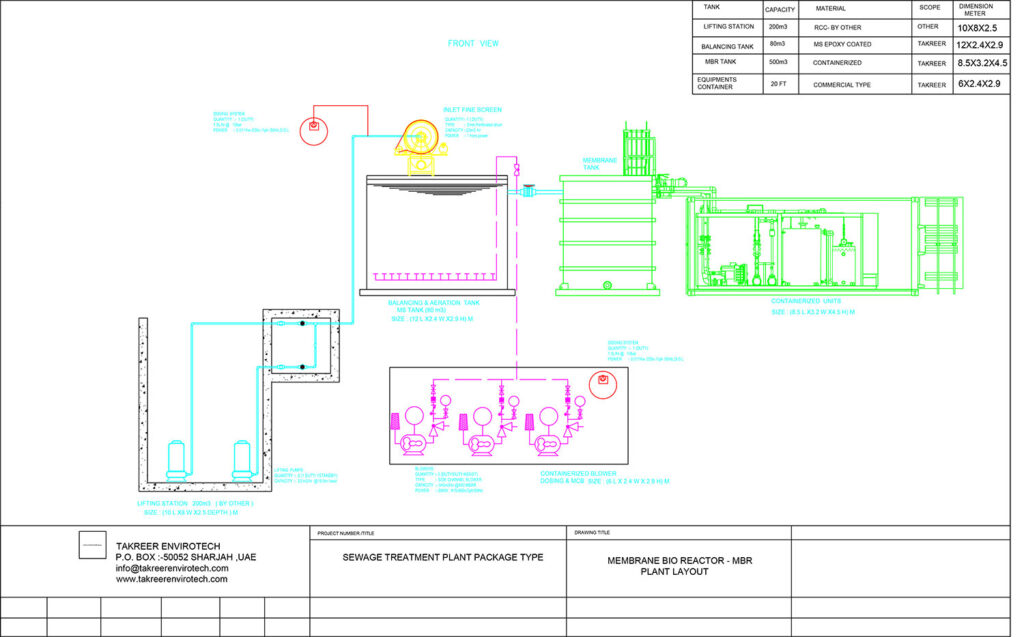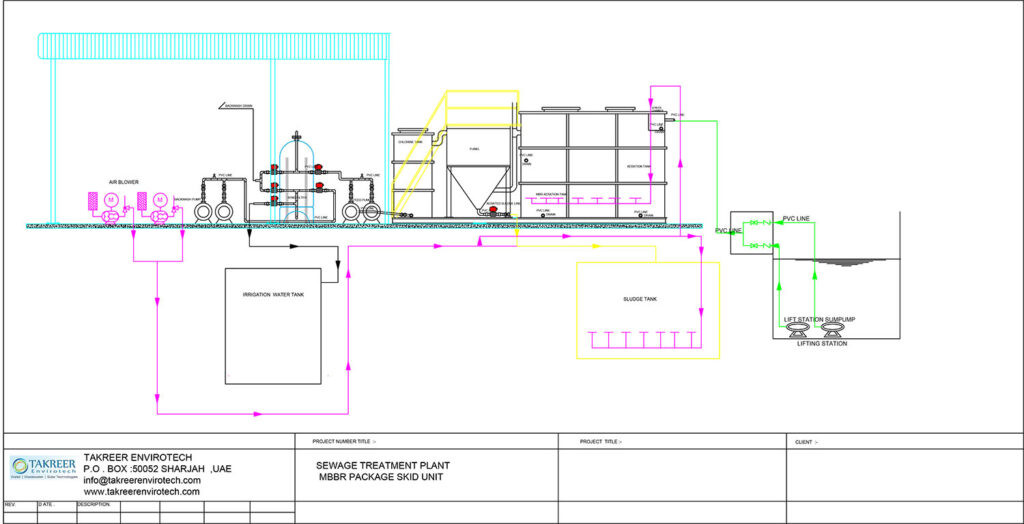Sewage Treatment
SAF (Submerged Aerobic Fixed Film)
Submerged Aerobic Fixed Film Reactor (SAF) is a cost-effective method of waste water treatment and sewage sanitation that is primarily used in residential and commercial complexes.
This technology is a process used to reduce the organic loading of residential and commercial sewage / waste water, and in doing so will reduce the Biological Oxygen Demand (BOD) and a significant quantity of Suspended Solids (SS).

Applications include:
- Stand-alone biological treatment
- Food waste applications
- Municipal Waste Water Treatment
- BOD Reduction
- Supplement or replace an existing system
- Installation as part of a complete sewage treatment works

Key benefits
- Simple to operate
- Robust in performance
- No moving parts or machinery in the treatment tank
- Very Small Footprint.

MBR (Membrane bioreactor)
The Membrane bioreactor (MBR) Membrane filtration has a major role in water and wastewater treatment, which is superior to the conventional water technologies with a proven better performance and more efficient economics. The basic membrane processes are microfiltration (MF), ultrafiltration (UF), nanofiltration (NF), reverse osmosis (RO). Separation ranges for those membranes are as follows: 100 to 1000 nm for MF, 5 to 100 nm for UF, 1 to 5 nm for NF, and 0.1 to 1 nm for RO. For more than the last 10 years MBRs have emerged as an effective secondary treatment technology by using membranes in the range of MF and UF.
In general MBRs have been applied to treat effluent in a number of industrial sectors, like:
| 1. food and beverage − high in organic loading |
| 2. petroleum industry − exploration, refining and petrochemical sectors |
| 3. pharmaceutical industry – have active pharmaceutical ingredients (APIs) |
| 4. pulp and paper industry − high levels of suspended solids, COD and BOD |
| 5. textile industry effluent − re-biodegradability, toxicity, FOG content and color |
| 6. landfill leachate − wide variety of dissolved and suspended organic and inorganic compounds |
| 7. ship effluents − legislative requirements and space restrictions. |
| 8. Industrial versus municipal treatment |

MBBR (Moving Bed Biofilm Reactor)
MBBR is a highly effective biological treatment process based on a combination of conventional activated sludge process and biofilm media. The MBBR process utilizes floating High Capacity Micro Organism BioChips media within the aeration and anoxic tanks. The microorganisms consume organic material. The media provides increased surface area for the biological microorganisms to attach and grow. The increased surface area reduces the footprint of the tanks required to treat the wastewater. The treatment process can be aerobic and/or anaerobic and operates at high volume loads. The MBBR process can be used for a variety of different applications to attain the desired results, depending on the quality of the wastewater and the discharge regulations.
Industrial applications
• Capacity increase
• Quality Improvement – BOD & Nitrogen Removal
• Fast recovery from Process Upsets
• Limited Footprint
• Future Expansion
• Minimize Process Complexity and Operator Attention
Benefits
• Economical very attractive
• Compact (saves space)
• Maintenance-friendly
• Strong
• High volume load
• Simply to extend
• Financial savings on discharge costs

If you have any questions or need help, feel free to contact with our team.
P.O. Box 50052 Sharjah United Arab Emirates
